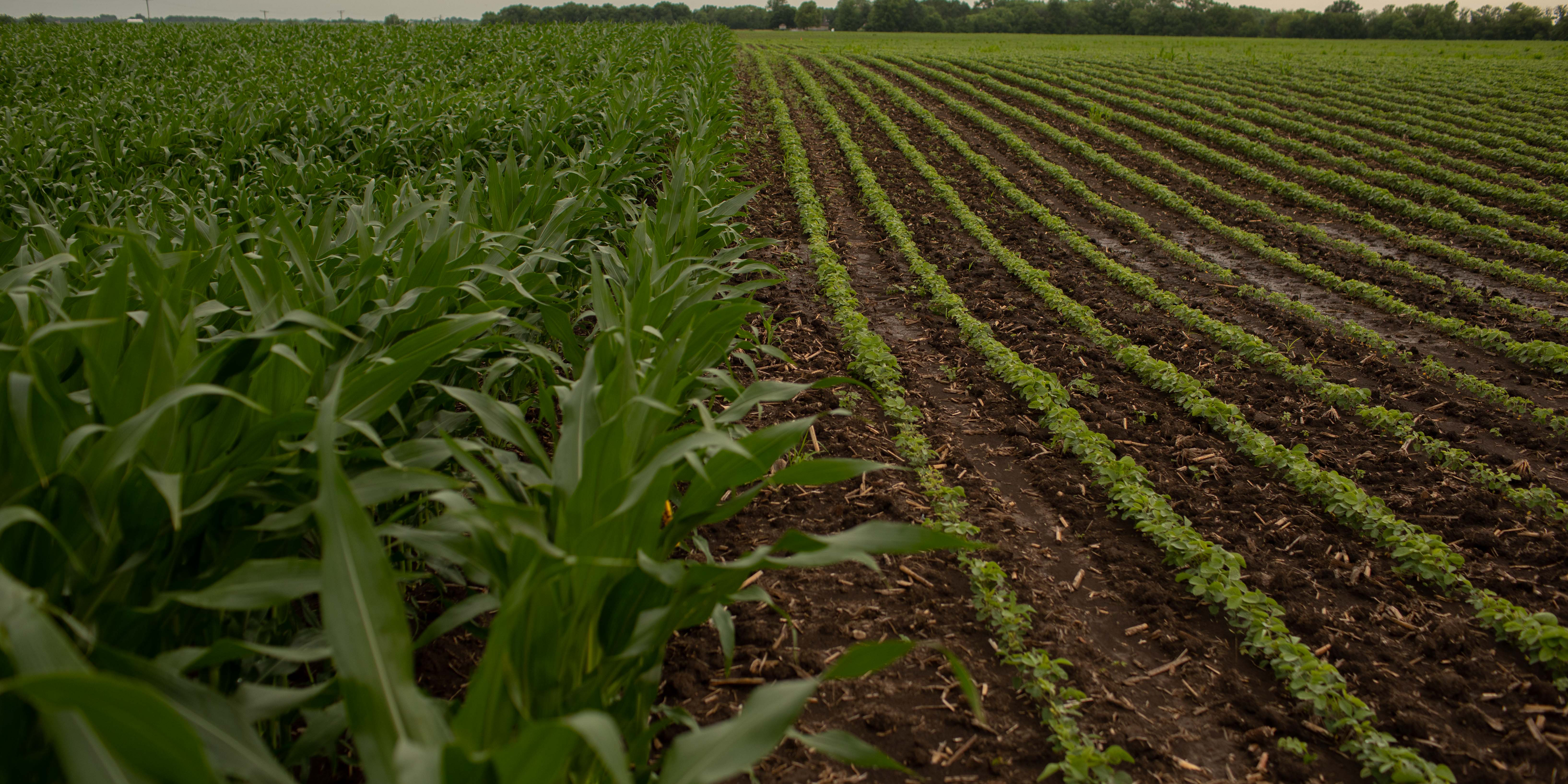AGRONOMICSUPPORT
YOU CAN TAKETO THE FIELD
Mixing it Up: Big Wins with Crop Rotation
Corn… after corn… after corn.
Soybeans… after soybeans… after soybeans.
Ask a farmer, and he or she will probably tell you that planting the same crop in the same field year after year is usually not a great idea.
Why? Well, for several reasons (keep on reading…). But the bottom line is there are also some big benefits to crop rotation.
So, what is crop rotation? Here’s a great definition from the Rodale Institute:
“Crop rotation is the practice of planting different crops sequentially on the same plot of land to improve soil health, optimize nutrients in the soil, and combat pest and weed pressure.”
This isn’t a new idea.
After witnessing the devastating effects that “tobacco on tobacco” had on his soils, George Washington implemented elaborate crop rotation “schemes” at Mt. Vernon in the 1760s.
And some Native Americans benefited from crop rotation (or, really, intercropping) when they planted corn, beans, and squash together.
You, as a farmer, are likely a crop rotation specialist yourself. In the Corn Belt, rotating corn and soybeans is commonplace. It’s also an important cultural component of crop production that balances agronomics with economics.
Crop Rotation: The Benefits
So what are the major upsides of a crop rotation system on your farm? We’re glad you asked.
Manage Nutrient Resources: Each crop you plant utilizes soil nutrients differently. When you grow the same crop year after year, it depletes the soil’s essential nutrients. Rotating crops allows a farmer to increase nutrient cycling and availability.
We see this in our typical corn/soybean rotation: corn uses a lot of nitrogen (just check out your fertilizer bill). But soybeans, as legumes, convert atmospheric nitrogen into a usable form, utilize it to grow, and pump the excess back into the soil—making more available for next year’s corn crop. This process also can decrease the amount of nitrogen you need to purchase.
Control Pests, Diseases, and Weeds: Let’s face it: we all get used to a routine. And pests are no different. When we plant the same crop year after year, insects and diseases figure this out and settle into a regular schedule. They hang out in the soil and wait for that moment to attack your crop—just like last year.
Rotating your crops and management techniques throws them off. Often, diseases and pests (like corn rootworm) will emerge, find nothing to live on, and die—decreasing your pest pressure for the next year when you return to the original crop.
Rotation works for weed management as well. Selecting hybrids and varieties with various traits and corresponding chemistries can prevent herbicide tolerance and improve weed control in your fields.
Improving Soil Fertility: As mentioned earlier, some crops will add nutrients back to the soil (again with that fertilizer bill). On top of that, different crops have different root systems that adjust and improve soil structure, which prevents erosion and enhances water infiltration. Adding a new crop can also stimulate soil microbial activity, improving overall fertility.
Crop Rotation: The Right Choice for Your Farm?
Although crop rotation programs can provide multiple benefits, make sure to first consider your unique soils and economic goals. Before making any changes, look at your soil tests and consider input costs.
And whether you are considering a more traditional corn/soybeans rotation or are looking at introducing a third crop like alfalfa or sorghum, LG Seeds will be by your side with reliable insight and advice.
Reach out to your LG Seeds agronomist today, and let’s see if a crop rotation program can improve your yields and boost your bottom line.






Agronomy Team